What is the sky for us? When we peer at the bewitching view of the night firmament, unwittingly arises a sensation of perishability of our existence compared to the eternal silence of trillions of shining stars. There is a feeling that the starry arch is a gate to the incomprehensible, which begins right here on the earth. Perhaps, for this very reason since ancient times people believed in a heavenly divine being that had created the world. The prayer most widespread in the world is addressed to the Heavenly Father: “Our Father, Who art in heaven...”

The main symbol of the sky / heaven among various ancient peoples was a circle or its section representing a heavenly hemisphere or vault. The ancients believed the visible universe was cupola-shaped and resting upon 4 pillars, or 4 basic elements: water, fire, earth and air. A circle for the ancients represented absolute equality, unity, infinity, completeness and eternity, since the circle line has neither beginning nor end, and all points on it are equivalent. Therefore, God was often depicted as a circle.
A circle is the only geometric shape that cannot be divided into similar shapes, though in principle it may contain numerous other circles inside. Hence, every being of a higher dimension absorbs characteristics and qualities of all dimensions contained in it.
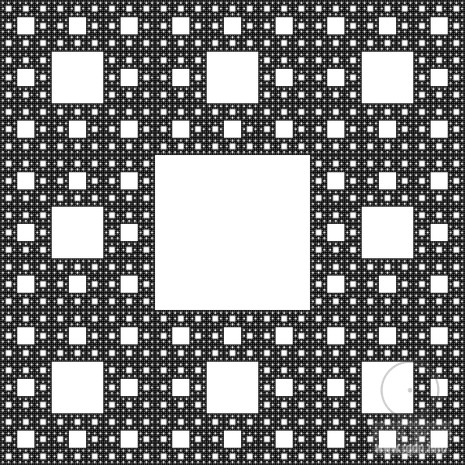
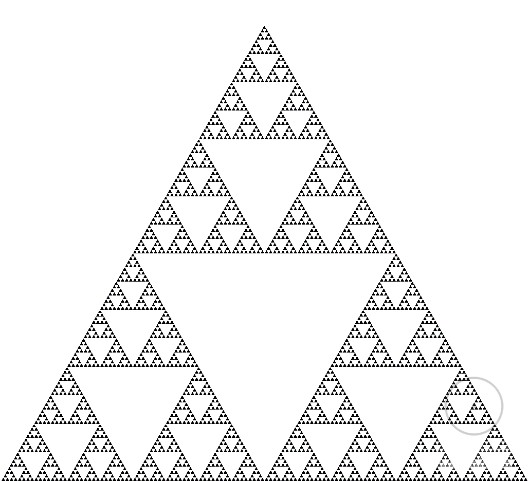
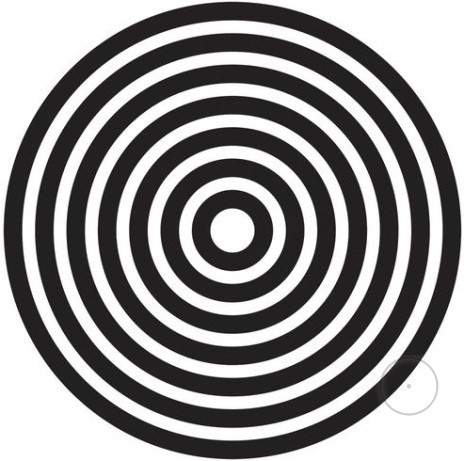
In Slavonic folk arts such feature manifested itself in nesting dolls, whereas the Bible and the Koran mention 7 heavens, though contemporary science distinguishes only 5 atmospheric layers.
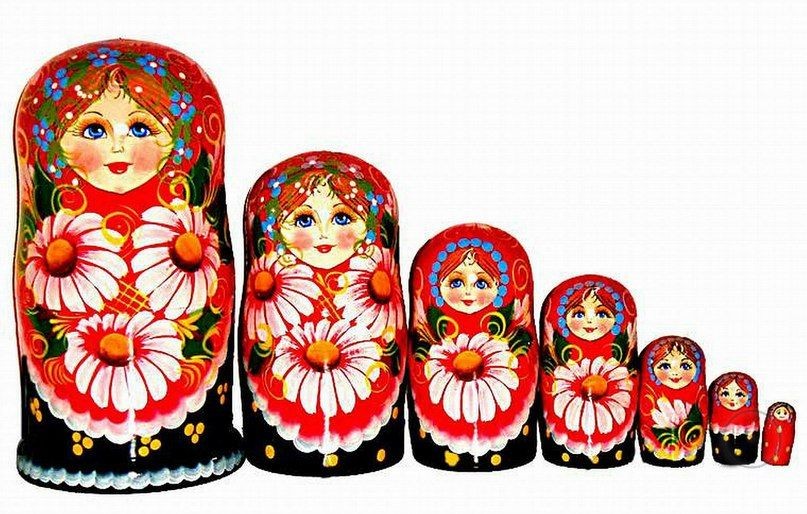
A circle is also an ancient symbol of the Soul as a particle of God, i.e. the true antimatter, or the Void in the material world. This surely echoed in arts and rituals all over the world: ritual dances around a fire or an altar, round shapes of yurts and marquees, round squares in the centre of ancient cities, sitting of sages in a circle, where the middle of the circle was empty to symbolize the Spiritual Nature. The entire human lifestyle in the past was a symbol of reverence for the Divine.
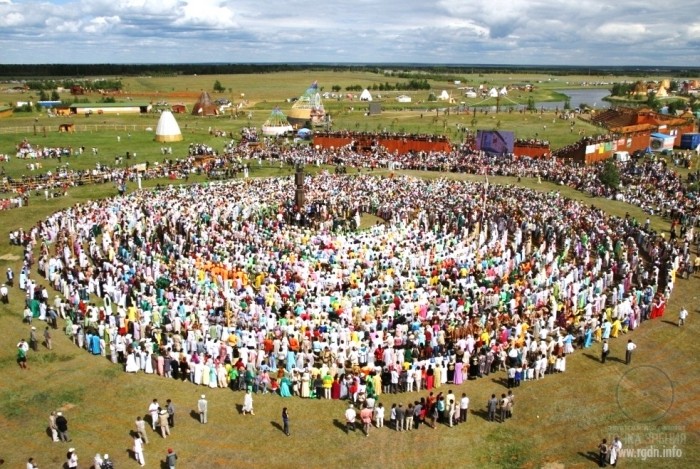
Ysyakh, the annual Yakut festival of the Sun
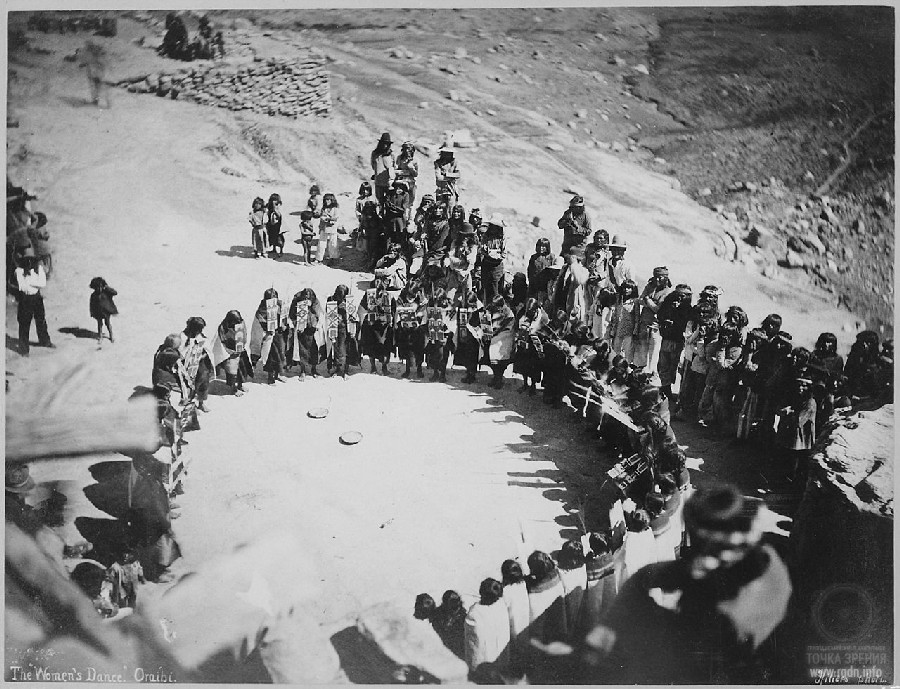
Hopi Indian women dancing
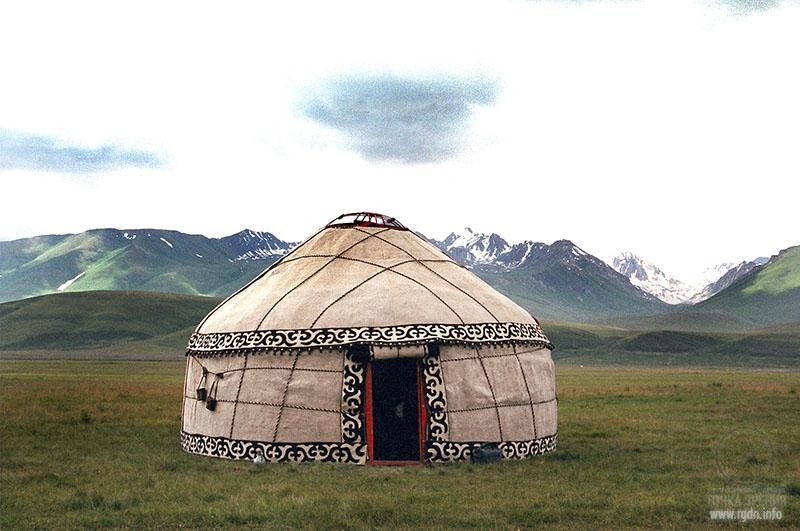
Yurt – a traditional house of Central Asian peoples
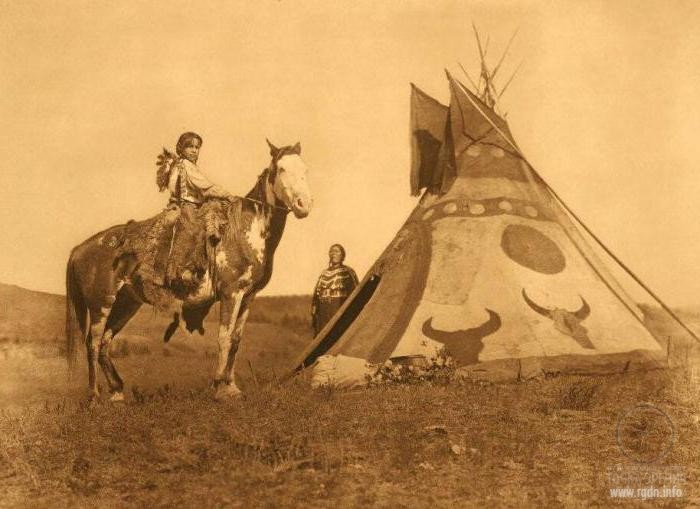
Wigwam – a house of North American Indians
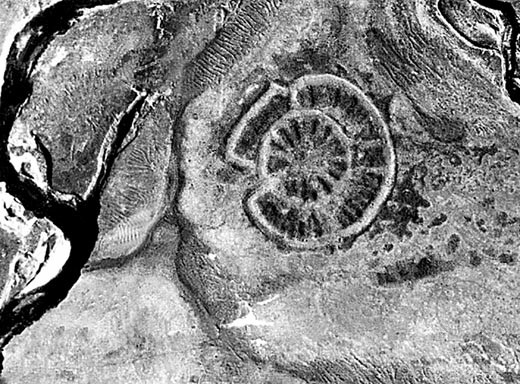
Arkaim ancient settlement, temple and observatory (satellite image)
In some myths the sky is represented as a summit of the world mountain (the Sumerians) or the mountain that supports the sky where gods live (Olympus of the Greeks, Tlaloc of the Aztecs, Brahmaloka at the top of Mount Meru in Hindu, Jain and Buddhist traditions), because a mountain symbolizes the ascent to Heaven. Ideas of the multilevel Heaven are widely present in architecture: pyramids, pagodas, ziggurats, multi-storey towers, etc. Steps, stairs or a ladder signify the way to the highest, usually the 7th sky, while a temple roof or dome symbolizes the sky / heaven itself.
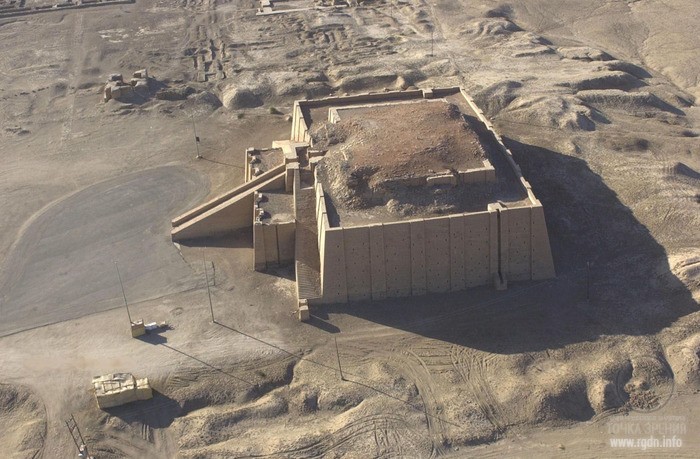
Ziggurat in Ur, Iran
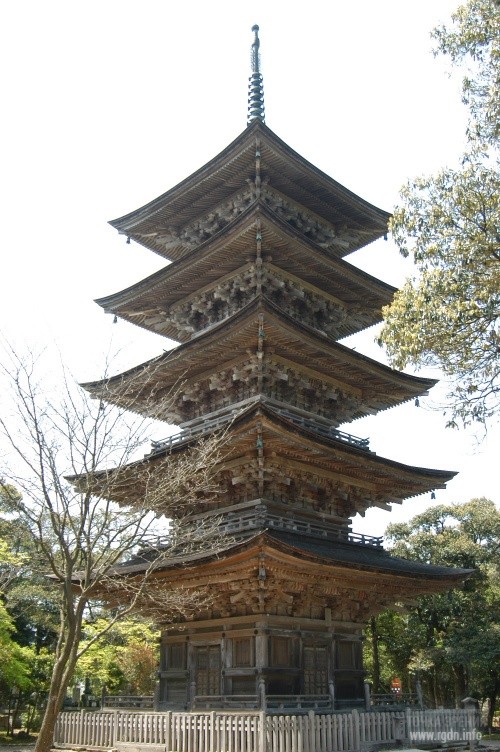
Pagoda, Japan
At that, while studying symbols of the sky of various peoples one can note such symbols, one way or another, also contain signs of the four cardinal directions.
For instance, in one of ancient cultures, which dates back to the 5th millennium BC and was widespread among Turkic and Mongolian nations across the Asian continent from Kamchatka to the Sea of Marmara, there was a cult of the sky deity Tengri. His symbols were the sun and shanyrak – a round aperture with a latticed crosspiece in the middle of a yurt cupola, the crosspiece being oriented to the four cardinal directions.
The entire nomad lifestyle was dedicated to the heavenly deity, which among other things was reflected in the shape of houses – light domelike movable yurts, since Tengri worshippers believed the sky had a shape of a cupola. The latticed crosspiece on the yurt cupola was oriented to the four cardinal directions, and it was possible to determine time by the sun position. The yurt door was oriented to the east – towards the rising sun, the sovereign of the sky.
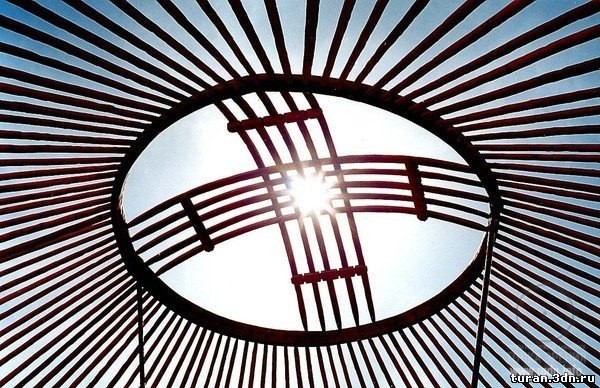
The light of the clear sky penetrated into the yurt through shanyrak, so people preserved direct contact with the sky deity Tengri even when they were inside the yurt. Therefore, for nomadic peoples shanyrak represented a door to the spiritual world, the shortest way to God, which has echoed in the national symbols of the Kazakhs, Kirghiz and Tuva.
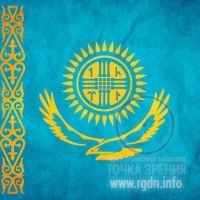
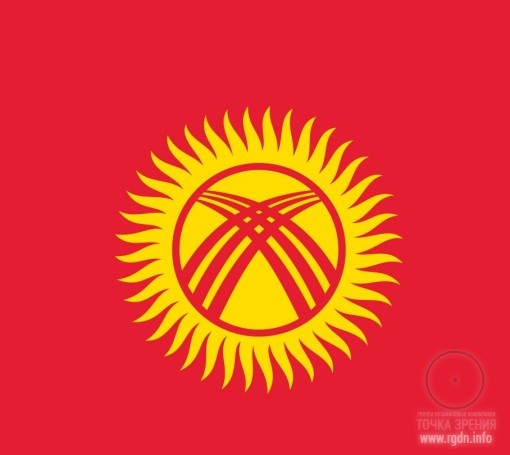
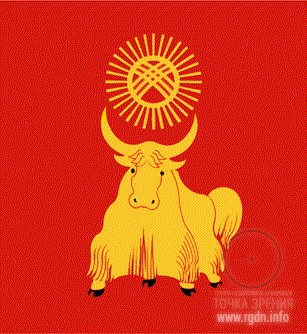
For ancient Egyptians, the goddess of the night starry sky or the Mother of Stars was Nut represented by a cow on the head of which there was a round disc or sun – god Ra, whereas the starry milk of the Heavenly Cow symbolized the Milky Way.
In Egyptian myths, the Cosmic Cow Nut lifts the sun Ra on herself to the heavenly heights, but at a great altitude she feels giddy, and her legs shake. To prevent her from flying away, 8 deities – the heavenly pillars support her by her feet, and the god of airspace Shu holds her by the belly.
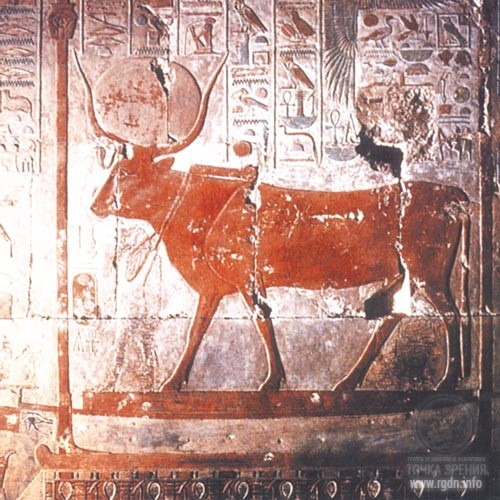
Sometimes Nut was depicted as a woman bent in a shape of a cupola, stretching along the horizon over the ground, and leaning with her fingertips and tiptoes, as if via 4 pillars, on the earth god Geb. Nut separated the invisible, impenetrable, eternal part of the universe from the visible, fleeting life, separated the divine world from the material, perishable world.
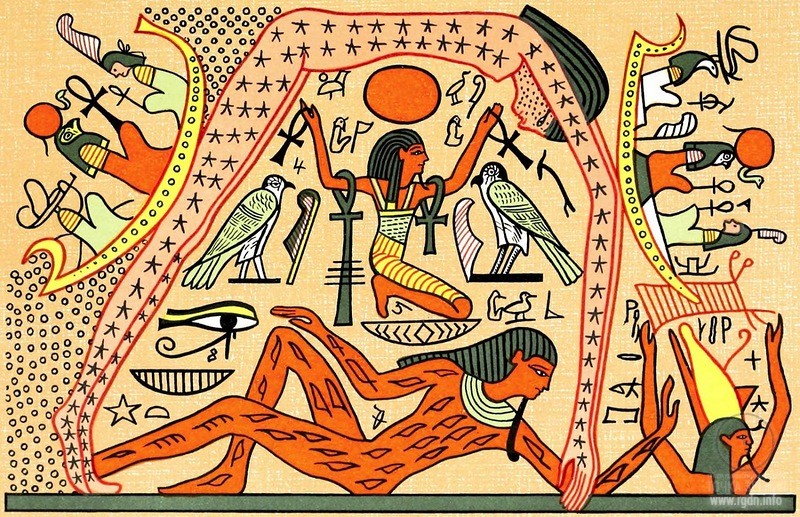
The ancient Chinese believed that a turtle – one of the four sacred animals – embodied the whole universe: its cupola-shaped shell was associated with the round sky and its flat belly with the square earth. This echoed in the symbols of Chinese altars and pavilions dedicated to the sky / heaven, which have a round shape, whereas multilevel pagodas are a symbol of steps of one’s ascent to the heaven.

The Temple of Heaven – Tiāntán (Beijing, China)
In Hindu myths, the thunder and lightning deity Indra rules Svarga (the Heaven) – the paradise located on the top of Mount Meru, surrounded with 7 skies. Symbols of Indra were a double intercrossed vajra placed inside a circle and a mighty bow looking like a rainbow.
Vajra is a symbol of lightning and the enlightened mind, since such state may be achieved as a result of sudden enlightenment; therefore vajra edges have a shape of 4-petal lotuses – the symbol of spiritual enlightenment. The superior spiritual power is invincible like a diamond, and vajra actually means diamond in translation from Sanskrit. A double vajra symbolizes the dual nature of the world, while the sphere in the centre symbolizes the universe. A vajra surrounded with a wheel preserves the ancient heavenly wisdom of Gods, so that anyone who comes with evil thoughts would be struck by thunder. However, in my opinion, the wheel around the vajra is also a symbol of the sky / heaven.
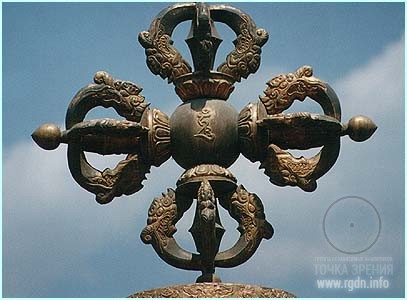
In Slavonic mythology, Svarog is the god of the firmament and the father of Dajdbog (the god of the sun) and Perun Svarozhich (the god of the heavenly thunderstorm). In the Old Slavonic language, svarga means “the heaven”, and owing to the second syllable rog, the name Svarog indirectly points to the domelike shape of the sky. However, since the root svar also means “creation”, Svarog was also given such epithets as the Heavenly Creator, the Heavenly Fire, or the Heavenly Farrier. In the chronicles of Johannes Malalas, the Byzantine author of Chronography (circa 491-578), Svarog is the farrier god as well.
Svarog created the entire universe. He sees to preservation of the balance of energies in the universe. For this reason our ancestors depicted him with four faces, meaning he knows everything that takes place in all the four cardinal directions. Nowadays various symbols of Svarog may be found on the web, but in any case they contain the number 8. From the AllatRa book by A. Novykh we know that a four-element shape symbolized a cube put on one of its corners, which is a symbol of spiritual transformation and victory over matter.
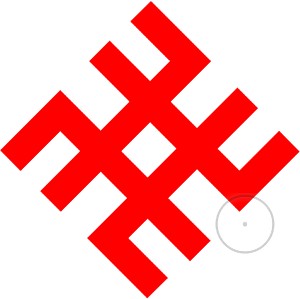
А) The symbol of Svarog
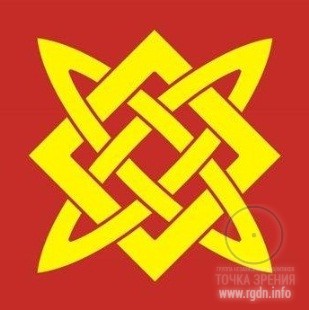
B) The square of Svarog
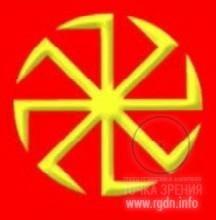
C) The circle of Svarog
Furthermore, we can see that symbols of Svarog contain rhombuses and swastikas. A rhombus inscribed in a square, a rhombus overstepping the edges of a square, thus forming eights corners, or an eight-pointed star are all symbols of the Primordial Knowledge of human spiritual liberation. Hence, Svarog is beyond the material world and symbolizes the ultimate human goal – spiritual liberation. According to the AllatRa book, a swastika directed clockwise is a symbol of the expanding universe, of the feminine power of Allat by which the Heavenly Creator created the whole world.
Even in the design of cross-domed churches each of the four sections of the building is ended with a cupola-shaped curvature signifying the firmament.
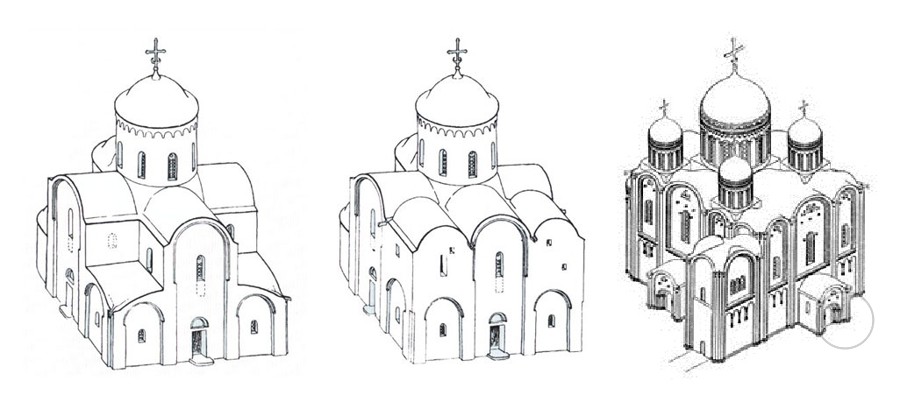
Inside the central (subsequently the eastern) cupola, as a rule, Virgin Orans (Oranta) supporting the heaven was depicted.
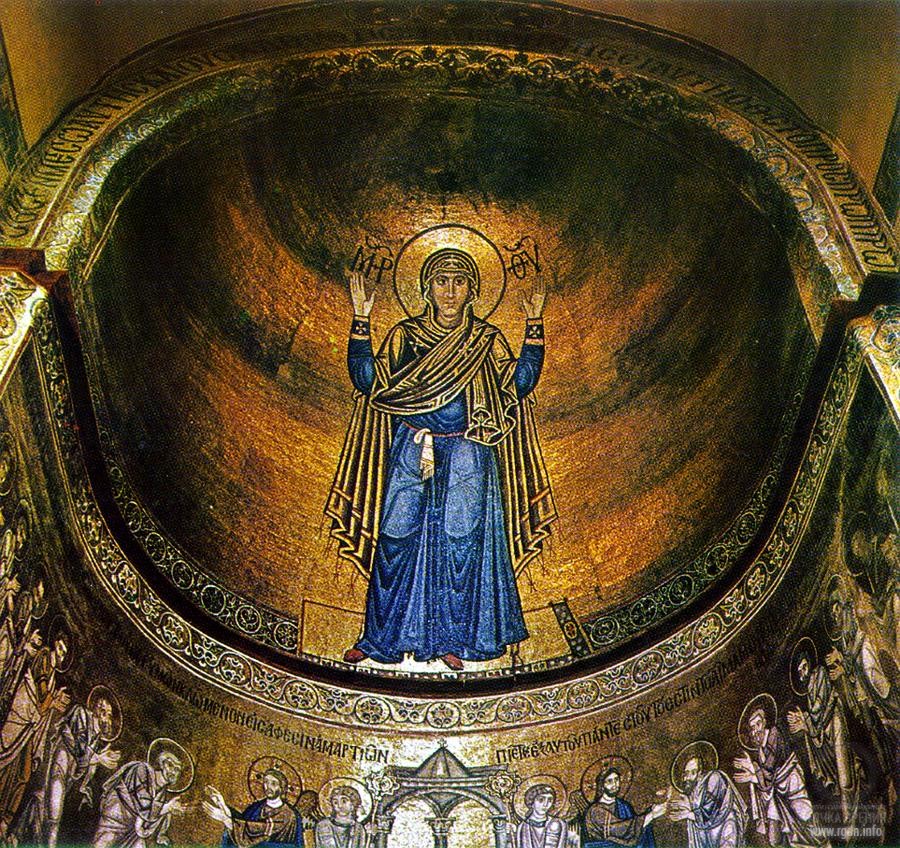
Virgin Orans (Oranta) in St. Sophia’s Cathedral (Kiev, Ukraine)
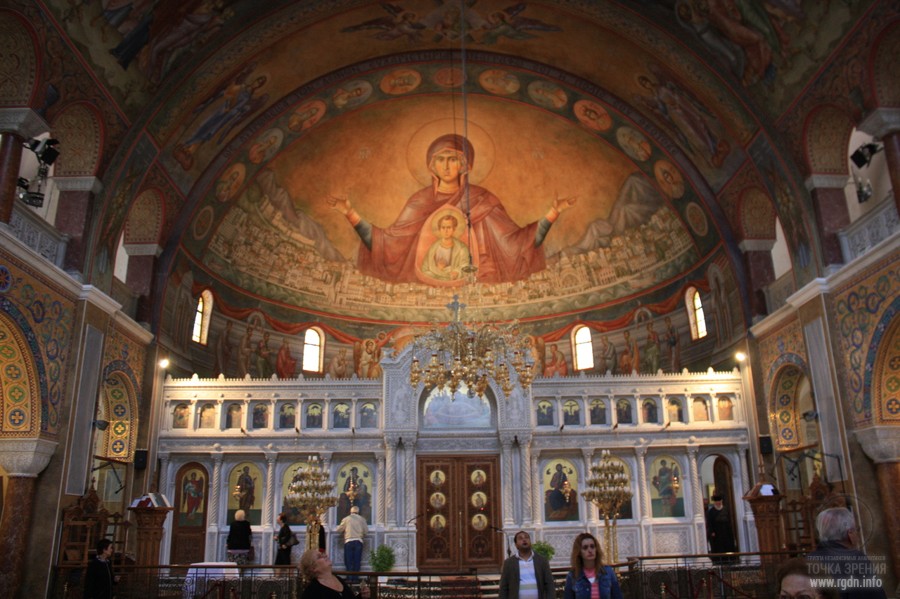
St. Andrew’s Cathedral (Patra, Greece)
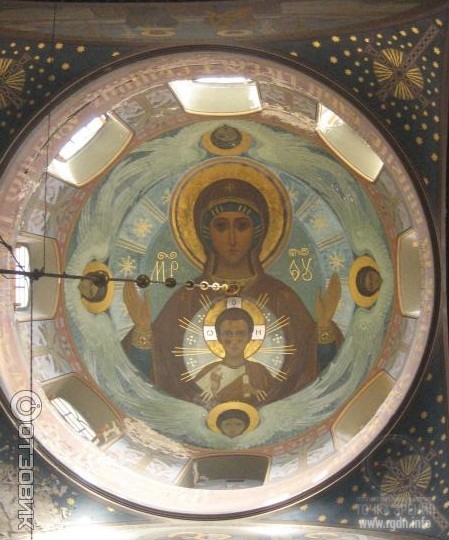
St. Simon the Canaanite Monastery (New Athos, Abkhazia)
Why did ancient peoples emphasize the four cardinal directions in symbols of the sky / heaven, depicting a cross, a square or a cube? Did they intend only to depict the cardinal directions, or may there have been something more significant? Which knowledge did the ancients want to communicate by means of such symbols, given that in ancient times the entire human lifestyle represented service to the divine forces and spiritual goals?
The AllatRa book contains the Primordial Knowledge of the invisible human structure – the four-sided pyramid with a detached top, which was known to humanity since remote antiquity.
According to the AllatRa book, each face of the human pyramid represents an energy Aspect having its special characteristics, which in ancient times were symbolized by the four cardinal directions or an equilateral cross. The four Aspects were symbolically depicted as animals or human beings together with animals, e.g. in Orthodox churches a lion, a calf, a human being, and an eagle are depicted at four corners of the central vault. Such symbols are also used on icons of Our Lady the Burning Bush and of the Saviour in Power.
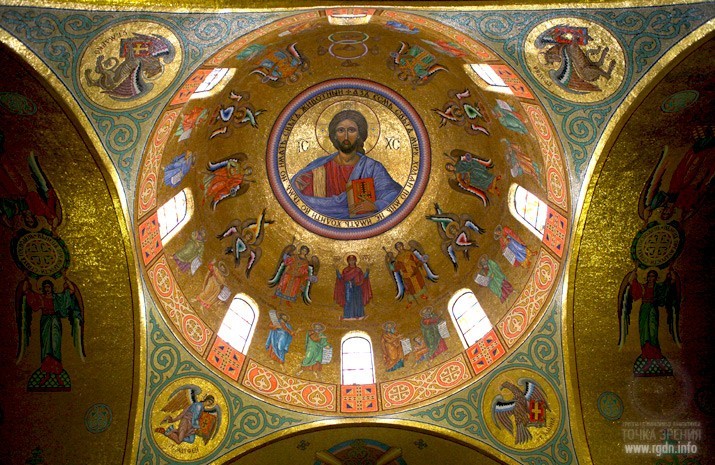
When a person works hard on spiritual self-development and achieves fusion with his or her Soul, he or she liberates oneself from the influence of matter, and correspondingly from those four Aspects, and enters the seventh dimension, the seventh sky, i.e. the invisible spiritual world, the world of God. Residing in the material world, we are as if in the Godmother’s womb (the nesting doll principle), so it is exactly the Mother of God who opens a way to paradise, to the Heavenly Father for us, and this is also reflected in Christian wall paintings and on Christian icons. Not without reason on some icons Our Lady is portrayed on a key (the Key of Understanding) or as a keyhole (the Addition of the Mind), while in the centre, right in Her heart Baby Christ – God – is depicted (Our Lady of the Sign, the Inexhaustible Chalice, the Life-Giving Spring).
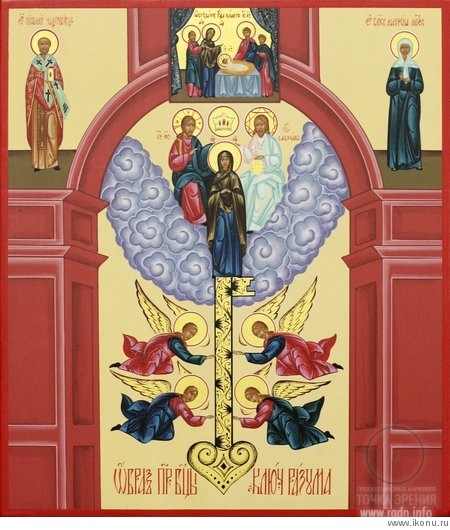
The Key of Understanding icon
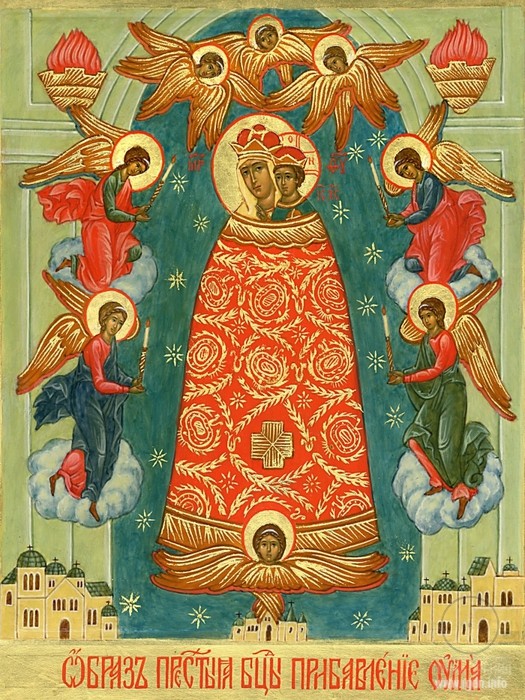
Icon of Our Lady Addition of the Mind (Giver of Wisdom)
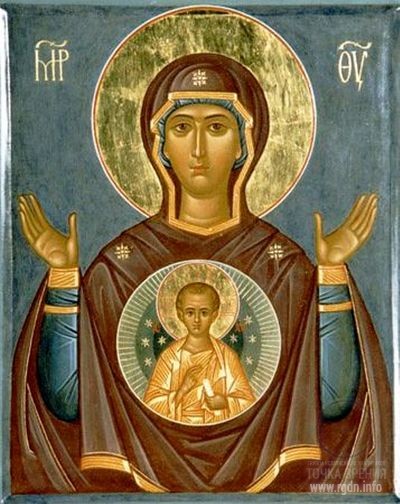
Icon of Our Lady of the Sign
Thus, a square or the four cardinal directions symbolize matter, whereas a circle or a rhombus is a symbol of the victory of spirit over matter and transfer to the divine spiritual world.
It is noteworthy that contemporary researchers engaged in quantum physics and neurophysiology have come to the conclusion that our universe is fractal and holographic, and modern computer technology already makes it possible to create holographic 3D images based on a transparent pyramidal structure with four symmetric images near each of the faces. When such images move on a plane surface and are mutually reflected on transparent faces of the pyramid, an illusion of a 3D object emerges in the centre.
Such products evidence the presence of an invisible pyramidal structure in a human being. If a human being was created in God’s image and likeness, then the firmament and the four cardinal directions represent a giant fractal pyramidal structure that produces an illusion of the reality of the three-dimensional material world. At that, in ancient times people who lived in different parts of the world were aware of this. They used diverse symbols to communicate to descendants that the material world is illusive, that everything in this world was created by God, and only true service to God is a worthy purpose of human existence on earth. Hence, the entire lifestyle of the ancients represented gratitude to and praise of the Heavenly Creator for the life He gave.
The world is integrated. All the knowledge comes from a single source, and we can clearly see this in symbols of the sky used by various peoples in various ages.
Prepared by Olga
 Symbols of the sky
votes:
322
Symbols of the sky
votes:
322
|

Project Aim










Leave comment